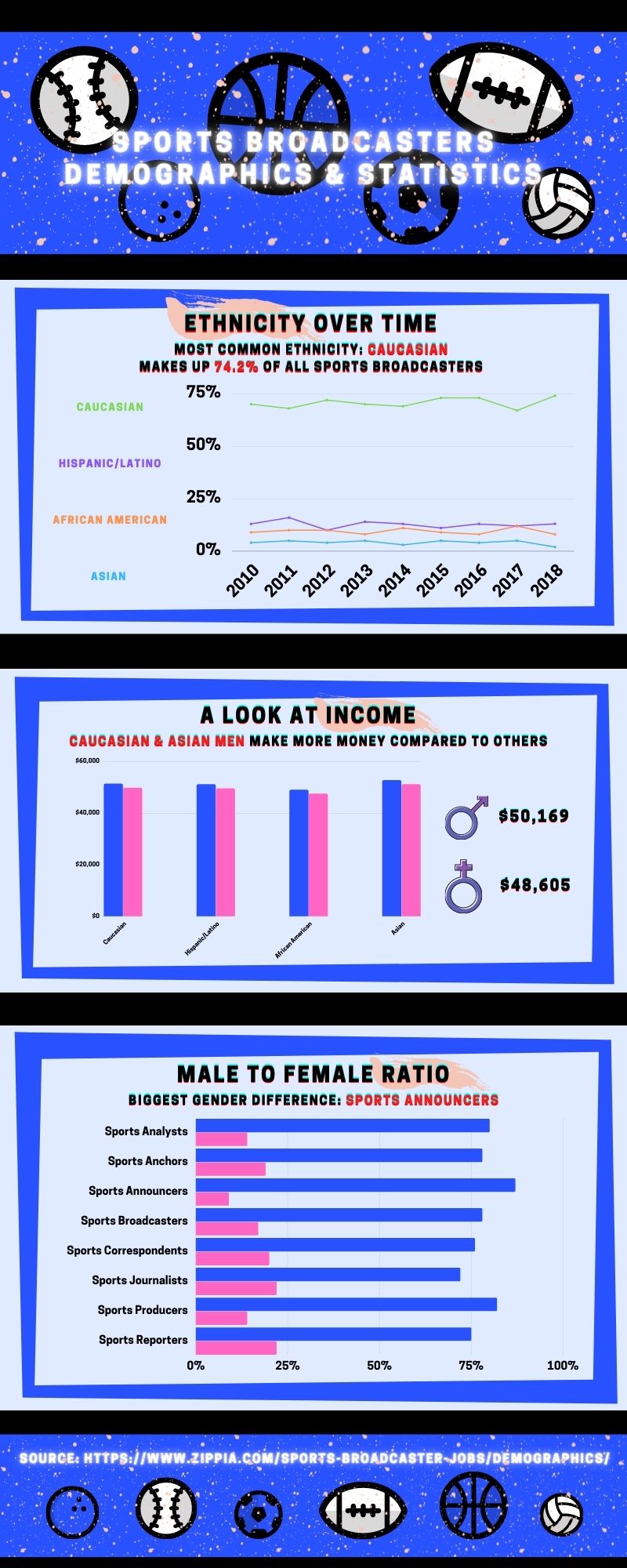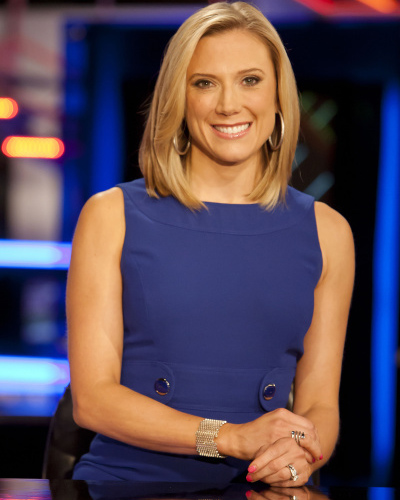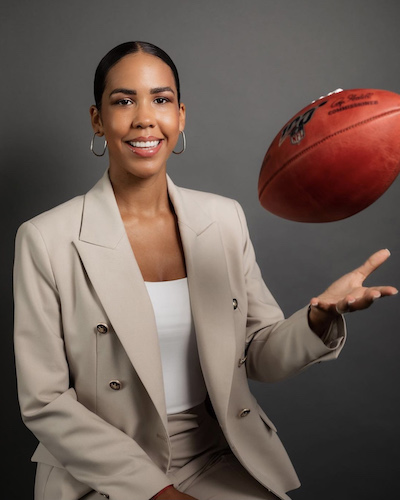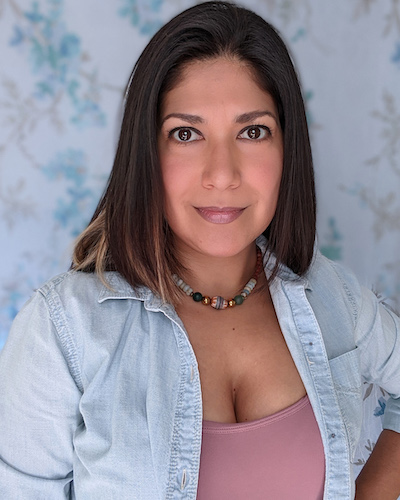The boys’ club of sports broadcasting
How female reporters are breaking gender barriers in sports media
Alena Botros, Gabriella Castania, Chloe Clark, Victoria Hunt, Lida Li
Women in sports broadcasting have consistently faced discrimination and biases in the field, and even with considerable advances by their predesccesors the industry still does not promote gender equailty.
There are female journalists who have pioneered the field and who have fought to amplify the voices of all women. But, there is still pushback.
In 1977, Melissa Ludkte, backed by Time Inc., sued the MLB among others for denying her access to the clubhouses at Yankees Stadium. The judge ruled that denying Ludkte the same access as male journalists was a violation of the 14th Amendment.
Nearly six decades later, women in sports journalism have begun to see major change. This year the NBA and MLB announced and produced their first all female broadcast team.
Willow Bay, former co-host of NBA Inside Stuff, began her career in sports media in the 90s.
“It was a very different era in sports… There were very few women in sports anchoring, hosting journalism at the time. And, that only reflected a reluctance to hire women,” she said.
At that time, gender disparities were largely evident, “extra scrutiny was placed on women because there were so few of them. There was an expectation that women would work harder to prove themselves; it was a subtle expectation.”
The gender wage gap has not improved much since the 90s. Today, women earn 82 cents for every dollar a man earns. In sports reporting, on average, women make an annual salary of $48,605; whereas men make an annual salary of $50,169. And, the wage gap only increases with women of color.
Bay added, “We put an enormous amount of pressure on ourselves as pioneers to really prove that we belong there, and for many of us, myself included, that did mean working harder, working longer, working smarter, and always feeling like you had to do that in order to prove you belonged."
Working with her co-anchor at the time, Ahmad Rashād, and a dominantly male-led production team, she did believe her abilities were often questioned.
Rob Parker, sports analyst and anchor, does believe men have more opportunities in the field because “it is the last all boys’ club.”
There is a “lack of equal access to jobs, and women have often been given the worst beats to cover throughout my 35 year career,” he said.
Only 11 percent of the sports media industry is made up of women. According to Zippia’s sports broadcaster demographics and statistics report, 78 percent are men and 17 percent are women, with 5 percent unaccounted for. The gender disparities seen within most fields not only extend to the sports reporting industry but rather dominate it.


Source: ESPN Front Row
Intersection of race and gender
Of the women in sports reporting, 74 percent are white, 13 percent are latino, and 8 percent are Black. White women hold more positions than all other ethnicities of women combined. The underrepresentation of women of color in the industry shows the intersection of gender and race, both being driving factors of this substantial bias.
Chrissy Grierson, a production assistant for NBC Olympics, is a young, Black woman trying to find her place in sports broadcasting.
"Being the only Black woman in a room full of white men in itself was challenging,”she said, and at times “felt very isolating.” Grierson believed her presence was “a culture shock.”
“Being a trailblazer is not all what it's cracked up to be,” she said, shaking her head.
Grierson fiercely believes that she has a responsibility to the women who look like her, to the women of color who will one day face the same obstacles she has faced. She believes it is her job to create room in this space for women like herself because she knows, “there are certain things women can offer that men can’t.”
Like Grierson, Emily Wirtz, a digital video producer and editor for NFL Media, expressed her reasoning behind her commitment to the sports industry, which is, to become a role model for other women and specifically women of color who want to be in sports.
Having diversity in sports, “will produce the best sports product,” Wirtz said. And, this diversity does not mean white women; it must extend to all women, so that all women are represented in the content created and produced.
Former sports journalist, Mayra Azanza, echoed Grierson and Wirtz in her emphasis of the lack of opportunities for women in journalism, and even more so women of color.
“We are always fighting each other because there are so very few opportunities,” said Azanza.
In July of 2020, Rachel Nichols, a white sports anchor for ESPN, made a comment regarding fellow ESPN reporter Maria Taylor. Nichols claimed Taylor was awarded a position based solely on her race and ESPN’s attempt to fulfill diversity numbers; this comment was only recently made public when the New York Times wrote a story outing Nichols and ESPN on the 4th of July.
Taylor announced her departure from ESPN exactly a year later.
Writz spoke about this issue, claiming, Maria Taylor “is still questioned, even by other women, not [only] men saying is she qualified.”




